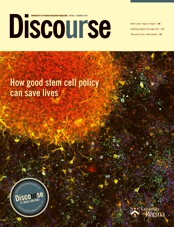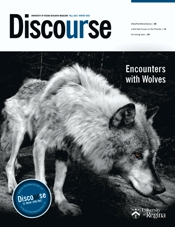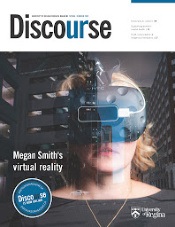Vote for University of Regina research photos!

A photo is worth…$2,000?
That’s the prize for the Natural Sciences and Engineering Research Council of Canada (NSERC) photo contest, Science Exposed. The goal of the contest is to highlight images of Canadian research, to create a sense of wonder and curiosity, to add to a database of images of Canadian research, and to contribute to the advancement of knowledge.
Each image is directly related to the researcher’s area of expertise and is accompanied by a written description.
What happens next is up to you – the audience – who have the tough job of voting for a favourite photo.
This year, the University of Regina has two contenders, making your job even tougher.
Geologic fluids in a crystalline time capsule
This photo is by Nahanni Young, a master's of science student, and her supervisor, Dr. Guoxiang Chi, a professor in the Department of Geology.

Here's their description of their photo:
Fluid inclusion analysis is a means of looking millions of years into the past for insight into the compositional information of fluid responsible for forming mineral deposits. It can also be used to determine the pressure and temperature conditions under which critical metals were deposited. This image shows drusy quartz (crystal) within a sandstone sample from the Maw zone rare-earth element deposit in the Athabasca basin of Saskatchewan, containing preserved fluid that was once abundant in this region, but is now long gone. We can see stripes running along the crystal boundary, which are clusters of microscopic liquid and vapour droplets entrapped in bands as the crystal grew outwards in open spaces over thousands of years. The goal of our study is to use these fluids to provide insight into how these deposits formed and improve the parameters to be used in the hunt for new deposits.
Peering into the gut
This photo is by Jay Savaliya, a bachelor of science student, assistant professor Dr. Nicole Hansmeier, adjunct professor Dr. Tzu-Chiao Chao, and associate professor Dr. Josef Buttigieg – all from the University of Regina's biology department.

Here's their description of their photo:
Gut health has become an indicator of overall health and even longevity. Diet and lifestyle are critical in this regard. However, some studies suggest that the anti-inflammatory properties of cannabis might improve gut health, but cannabis also has complex effects on the gut microbiome. In our study, we are analyzing the impact of long-term cannabis exposure on cognitive abilities and gut health in rats. This image provides a glimpse into the small intestine of a rat, which has been stained with Movat’s pentachrome. You can see a network of capillaries (yellow-coloured with magenta-coloured red blood cells inside) surrounded by epithelial cells (saffron-coloured) and goblet cells (teal-coloured clusters). The latter produce protective layers of mucus, which maintain a healthy relationship between intestinal tissue and gut bacteria.
Next steps
There are three jury prizes, each worth $2,000.
There is also one People's Choice Award, also worth $2,000. This is where you come in. To help these U of R researchers win big, you have to VOTE!
Head to the Science Exposed website and vote for your favourite University of Regina research photo today!
Voting closes in October 2023.












